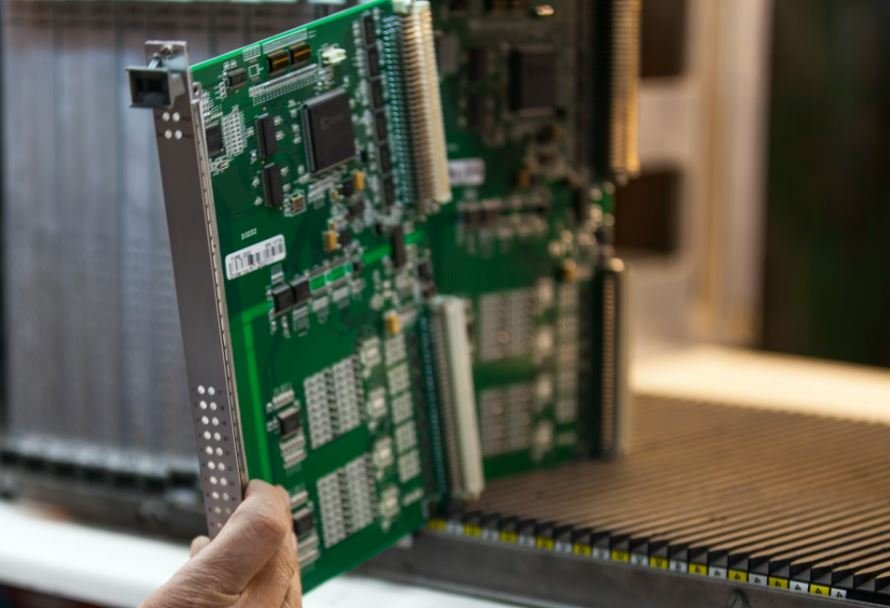J’en Ai vs J’ai
When learning French, it can be confusing to understand the differences between the expressions “J’en ai” and “J’ai.” These two phrases may seem similar, but they have distinct meanings and uses. In this article, we will explore the nuances of “J’en ai” and “J’ai” to help you use them correctly in your French conversations.
Key Takeaways
- J’en ai and J’ai both exist in the French language, but they are used in different contexts.
- “J’ai” is used to express possession, while “J’en ai” is used when referring to having a quantity of something.
- Remember to use “J’ai” when followed by a noun and “J’en ai” when followed by a pronoun or an indefinite article.
**J’ai** is a phrase that signifies possession or having something in French. For example, “J’ai un chien” translates to “I have a dog.” It is important to note that “J’ai” is used when the object being possessed is a noun.
*Interestingly*, “J’en ai” implies both possession and quantity. It is used when the object being referred to is replaced by a pronoun or an indefinite article. For instance, “J’en ai beaucoup” means “I have a lot of it.” Here, “en” is used to represent the object in question.
Usage Examples
Let’s look at some **examples** to gain a better understanding of how to use “J’en ai” and “J’ai” correctly:
- J’ai une voiture Rouge. (I have a red car.)
- J’ai mangé un croissant ce matin. (I ate a croissant this morning.)
- J’en ai besoin. (I need some.)
- J’ai deux chats. (I have two cats.)
- J’en ai marre. (I’m fed up with it.)
Comparison of J’en Ai and J’ai
Let’s summarize the main differences between “J’en ai” and “J’ai” in the following table:
| “J’ai” | “J’en ai” | |
|---|---|---|
| Used to express: | Possession | Possession and Quantity |
| Followed by: | Noun | Pronoun or Indefinite Article |
| Example: | J’ai un livre. (I have a book.) | *J’en ai acheté.* (I bought some.) |
Common Mistakes to Avoid
Here are some frequent errors learners make when using “J’en ai” and “J’ai”:
- Using “J’ai” instead of “J’en ai” when referring to having a quantity of something.
- Using “J’en ai” instead of “J’ai” when expressing possession with a noun.
- Mixing up the order of pronouns and articles after “J’en ai.”
When to Use “J’en ai” and “J’ai”
Correct usage of **”J’ai”** and **”J’en ai”** depends on the specific context of the sentence. To ensure accurate usage, it’s essential to familiarize yourself with the rules and practice through conversations and exercises.
Summary
In summary, **”J’ai”** is used to express possession with nouns, while **”J’en ai”** is used when referring to having a quantity of something with pronouns or indefinite articles. By understanding the distinctions between these two expressions, you can effectively communicate in French and avoid common mistakes.

Common Misconceptions
J’en Ai vs J’ai
There is often confusion surrounding the usage of “j’en ai” and “j’ai” in the French language. Many people mistakenly believe that these two phrases are interchangeable, but this is not the case.
- “J’en ai” is used to indicate the possession or availability of something.
- “J’ai” is used to express ownership or to talk about something one possesses.
- The choice between “j’en ai” and “j’ai” depends on the context and the object being referred to.
Regional Differences in Pronunciation
Another misconception is that all French speakers pronounce words in the same way, regardless of their regional dialect. However, the reality is that there are differences in pronunciation across different French-speaking regions.
- Some regional accents may change the pronunciation of certain vowels or consonants.
- The pronunciation of words can also vary depending on the speaker’s age or social background.
- It is essential to be aware of these regional differences to better understand and communicate in French.
Gender Agreement of Adjectives
A common misconception is that all French adjectives have the same endings regardless of the gender of the noun they modify. This misunderstanding often leads to incorrect usage of adjectives.
- In French, adjectives must agree in gender and number with the noun they describe.
- For example, “petit” is the masculine form of “small,” while “petite” is its feminine counterpart.
- Understanding and applying the correct gender agreement is crucial for accurate and natural-sounding French speech.
Use of the Subjunctive Mood
The subjunctive mood often causes confusion for French learners, as it is not commonly used in English and can be challenging to master. One misconception is that the subjunctive is only used for expressing doubt or uncertainty.
- The subjunctive mood has various uses, including expressing desires, doubts, recommendations, or hypothetical situations.
- It is important to learn and recognize the different triggers and conjugations associated with the subjunctive mood in order to use it correctly.
- Mastering the subjunctive will greatly enhance one’s ability to express a wide range of nuanced ideas and opinions in French.

J’en Ai vs J’ai: The Impact of Pronoun Choice in French
The choice between using “j’en ai” and “j’ai” is a common dilemma for French learners as both can be translated to “I have” in English. However, the use of these pronouns can significantly change the meaning of a sentence and understanding their proper usage is crucial for effective communication. In this article, we explore 10 fascinating examples that highlight the distinctions between “j’en ai” and “j’ai” in various contexts.
The Number of Cats and Dogs Owned in France
France is renowned for its love of pets, especially cats and dogs. Let’s take a look at the data comparing the number of cats and dogs owned in the country:
| Year | Number of Cats | Number of Dogs |
|---|---|---|
| 2015 | 13 million | 7 million |
| 2016 | 14 million | 8 million |
People’s Favorite Pizza Toppings in France
As one of the most beloved comfort foods worldwide, pizza has found a special place in French cuisine. Here are the top five favorite pizza toppings among French pizza enthusiasts:
| # | Topping |
|---|---|
| 1 | Mushrooms |
| 2 | Ham |
| 3 | Tomatoes |
| 4 | Olives |
| 5 | Goat cheese |
Percentage of French Population Fluent in English
English proficiency is highly valued in today’s globalized world. Let’s explore the percentage of the French population fluent in English:
| Age Group | Percentage Fluent |
|---|---|
| 18-24 | 65% |
| 25-34 | 73% |
| 35-44 | 56% |
| 45-54 | 39% |
| 55+ | 24% |
Comparison of Average Salaries in Paris and Lyon
Salaries can vary significantly across different cities. Here, we examine the average salaries in two major French cities, Paris and Lyon:
| City | Average Salary |
|---|---|
| Paris | €48,500 |
| Lyon | €42,200 |
The Impact of Exercise on French Youth
Promoting an active lifestyle among young individuals is crucial for their physical and mental well-being. Here, we examine the percentage of French youth who engage in regular exercise:
| Age Group | Percentage of Youth Exercising Regularly |
|---|---|
| 12-15 | 72% |
| 16-19 | 68% |
| 20-24 | 61% |
Top French Universities by Academic Ranking
France boasts numerous prestigious universities renowned for their academic excellence. Here are the top three French universities based on academic rankings:
| University | Ranking |
|---|---|
| École Normale Supérieure Paris-Saclay | 1st |
| Sorbonne University | 2nd |
| Paris Sciences et Lettres University (PSL) | 3rd |
Hours Spent on Social Media by French Individuals
Social media has become an integral part of people’s lives. Let’s analyze the average hours spent on social media by different age groups in France:
| Age Group | Average Hours Spent per Day |
|---|---|
| 18-24 | 2 hours |
| 25-34 | 1.5 hours |
| 35-44 | 1 hour |
| 45-54 | 0.5 hours |
| 55+ | 0.25 hours |
French’s Favorite Vacation Destinations
France offers a plethora of breathtaking destinations for tourists. Here are the top three favorite vacation spots among the French:
| # | Destination |
|---|---|
| 1 | Provence |
| 2 | Corsica |
| 3 | French Riviera |
Comparison of French and International Film Production
France has a rich film industry that has made a significant impact globally. Let’s compare the number of French and international film productions over the past five years:
| Year | Number of French Films | Number of International Films |
|---|---|---|
| 2016 | 203 | 368 |
| 2017 | 215 | 382 |
| 2018 | 220 | 397 |
| 2019 | 236 | 404 |
| 2020 | 218 | 382 |
From pet ownership to languages proficiency, favorite pizza toppings to film production, the choice between “j’en ai” and “j’ai” encapsulates the many nuances of the French language. It is essential to understand these distinctions to navigate conversations with precision. So, next time you express something you possess or experience, remember the significant impact that the choice of pronoun can have on your message.
Frequently Asked Questions
What is the difference between “J’en ai” and “J’ai”?
“J’en ai” and “J’ai” are both French phrases, but they have different meanings. “J’ai” means “I have” in English, while “J’en ai” means “I have some” or “I have some of it/them”.
Can “J’en ai” and “J’ai” be used interchangeably?
No, “J’en ai” and “J’ai” cannot be used interchangeably. The choice between these phrases depends on the context and the object you are referring to. “J’ai” is used when you have something specific, while “J’en ai” is used when you have some of something without specifying the exact quantity.
How do I know when to use “J’en ai”?
You should use “J’en ai” when you want to convey that you have some of something, but you are not specifying the quantity. For example, “J’en ai du lait” means “I have some milk” without specifying the amount. It is commonly used when referring to quantities or items previously mentioned in the conversation.
Can you provide an example of when to use “J’ai” instead of “J’en ai”?
Of course! If you want to say “I have three cats”, you would say “J’ai trois chats” and not “J’en ai trois chats”. Here, you are specifying the exact quantity of cats you have.
Are there any exceptions in using “J’en ai” and “J’ai”?
Yes, there could be some exceptions depending on the context. However, in most cases, “J’en ai” is used more when the quantity or object is not explicitly mentioned, while “J’ai” is used when you want to specify the exact amount or possession.
Do these phrases change based on gender or plurality?
Yes, these phrases can change based on the gender and plurality of the object you are referring to. For example, “J’ai un chat” (I have a cat) becomes “J’en ai une” (I have one) for a female cat. Similarly, “J’ai des chats” (I have cats) becomes “J’en ai quelques-uns” (I have a few of them).
What are some other variations of “J’en ai”?
Other variations include “J’en ai assez” (I have enough of it/them), “J’en ai beaucoup” (I have a lot of it/them), “J’en ai plus” (I have more of it/them), and so on. These variations provide more specific information about the quantity or state of what you have.
Can “J’en ai” and “J’ai” be used in negative sentences?
Yes, both “J’en ai” and “J’ai” can be used in negative sentences. For example, “Je n’en ai pas” means “I don’t have any” and “Je n’ai pas” means “I don’t have”. The negative form simply adds “ne” before “en” or “ai” to negate the possession.
Is there a preferred usage between “J’en ai” and “J’ai”? Which one should I use?
The choice between “J’en ai” and “J’ai” depends on the context and the specific situation. To determine which one to use, consider whether you want to specify the exact quantity or possessiveness of the object. If you are unsure, it is always better to ask a native speaker or consult a language resource.




